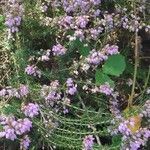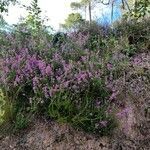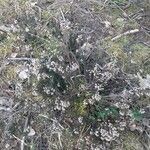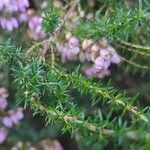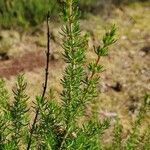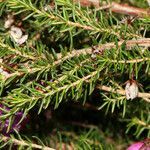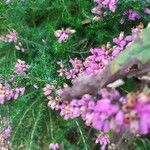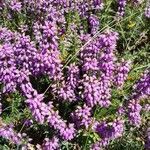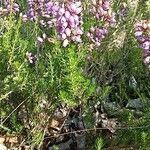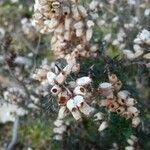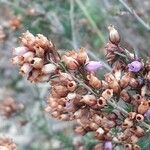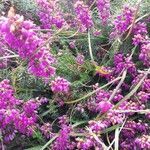Plants ± erect, 15-30 cm; twigs of current season green, with short, stiff hairs, older twigs brownish, glabrescent. Leaves in whorls of 3; petiole 0.1-0.3 mm; blade linear-lanceolate, flat to compressed-triangular in cross section, 2.5-5 × 0.3-0.6 mm, margins strongly revolute, sparsely prickled, surfaces glabrous. Inflorescences terminal racemes, ellipsoid, (1-)2-4(-10) cm. Pedicels 2-3 mm, shortly hairy. Flowers: calyx lobes deltate, 2.5-3 × 0.8-1 mm, margins denticulate, apex subacute, glabrous; corolla bright reddish purple, campanulate, 5-6 mm, lobes broadly deltate, 0.5 mm, apex rounded; stamens 10; filaments 3 mm; anthers awned, ca. 0.7 mm, awns 2, basal, 2-3-fid, 0.2-0.3 mm; ovary glabrous; style ca. 4 mm; stigma slightly exserted, slender, capitate. Capsules 1-2 mm, glabrous. Seeds obovoid, 0.7 × 0.4 mm, finely reticulate. 2n = 24.
Shrub to 4 dm; lvs linear, essentially glabrous, as also the sep and bracts; cor ovoid, 6–7 mm; anthers with short, broad basal appendages; 2n=24. Nantucket Isl., Mass. July, Aug.
A low spreading shrub. It grows 15-60 cm tall.
